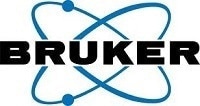In this interview, join Bruker as they describe how to improve battery production and performance through the entire value chain with the help of NMR.
How does nuclear magnetic resonance (NMR) spectroscopy contribute to the analysis of electrolytes?
Dr. Andrea Steck:
Nuclear magnetic resonance (NMR) spectroscopy plays a crucial role in electrolyte analysis by offering insights into various aspects. One key feature of NMR is the ability to perform multi-nuclear investigations, allowing us to understand electrolyte composition, degradation products, and iron transport mechanisms. For instance, we can observe how degradation processes unfold over time by examining hydrofluoric acid in both proton and fluorine NMR spectra.
NMR spectra provide information through chemical shifts, signal patterns, and signal areas. Chemical shifts, indicative of moieties in chemical structures, help characterize components, while signal patterns, such as splitting, are diagnostic tools for understanding structures.
Signal areas, corresponding to the number of nuclei generating the signal, are vital for quantifying components, forming the basis for structural characterization and component quantification in electrolytes.
Can you please explain the significance of signal fitting in NMR?
Dr. Andrea Steck:
The significance of signal fitting in NMR is important in the context of resolving overlapping signals. When signals overlap, attempting to estimate area fractions becomes challenging. Instead, signal fitting is employed as a reliable method.
By fitting the areas of overlapping signals and checking against known isotopic ratios from the literature, we can accurately determine the areas of individual signals. This approach ensures reliable quantification even when signals overlap.
How does the Fourier 80 benchtop NMR enable quick purity control and characterization of impurities in solvents for electrolytes?
Dr. Andrea Steck:
The Fourier 80 benchtop NMR helps in quick purity control and characterization of impurities in solvents for electrolytes. Acquiring a broad spectrum of a commercial electrolyte using Fourier 80 reveals the main components and by-components.
These electrolyte impurities can be identified without sample preparation, enabling rapid and easy purity control of raw materials or incoming goods. The Fourier 80 also allows the measurement of various nuclei, such as proton and heteronuclear experiments (fluorine or phosphorus).
This provides comprehensive information in a single run. This capability is demonstrated by tracking impurities like hydrofluoric acid during degradation, offering a reliable means to identify degraded electrolytes over time.
What key advantages does the Fourier 80 benchtop NMR spectrometer offer in terms of industrial applicability?
Dr. Marcio Cobo
The Fourier 80 benchtop NMR spectrometer is pivotal in optimizing lithium extraction from brines. It can effectively monitor the concentration of lithium, sodium, and boron at various stages of the extraction process. This monitoring is crucial for ensuring the commercial viability of lithium extraction.
The Fourier 80 is advantageous for industrial applications due to its cryogen-free nature, low maintenance costs, and small footprint. Its high throughput, facilitated by an autosampler compatible with the Fourier 80, allows for continuous measurements, minimizing user interaction and making it an ideal solution for industrial environments.

Image Credits: Bruker BioSpin Group
Could you elaborate on the user-friendly aspects of the Fourier 80 system?
Dr. Marcio Cobo
The user-friendly aspects of the Fourier 80 system are evident in both sample preparation and the quantification process. For sample preparation, collecting brines is a straightforward process. This involves transferring the brine into a standard NMR tube without additional chemicals or special procedures.
This simplicity makes the system accessible to users without extensive NMR expertise. In terms of quantification, the system employs reference samples or external standards with known concentrations, eliminating the need for complex methodologies. The calibration involves choosing reference samples such as lithium acetate dihydrate, boric acid, and sodium chloride with known concentrations.
The software utilizes the measured data to calculate factors that establish a relationship between NMR area and concentration. Once calibrated, users can easily bring their brine samples to the instrument, and the software automatically calculates concentrations based on the NMR signals. This streamlined process eliminates the need for in-depth NMR knowledge.
How does Time-Domain NMR contribute to the early detection and quantification of slurry separation in battery electrode plate coatings?
Dr. Bruno Chencarek
Time-domain NMR, through the mini-spec benchtop spectrometer, plays a vital role in the early detection and quantification of slurry separation in battery electrode plate coatings.
The technique allows the identification of separated phases by utilizing relaxometry measurements, which are highly sensitive to the solid fraction content in the slurries.
This sensitivity helps us to detect minor signals indicating the early stages of slurry separation. Over time, the technique systematically reveals the growth of these signals, providing a quantifiable measure of slurry separation.
How does Time-Domain NMR serve as a sensitive tool for assessing time stability and physical properties?
Dr. Bruno Chencarek
Time-domain NMR can assess time stability and physical properties in the context of slurries for battery applications. Through a dilution series, we have demonstrated that the average relaxation rate obtained from Time-Domain NMR measurements using the mini-spec correlates directly with the dilution content.
This correlation is essential because changes in dilution content impact properties such as dispersion, viscosity, and density. Time-domain NMR is valuable in detecting and quantifying time stability by assessing the percentage of separated phases and in accessing physical properties by revealing the impact of dilution content on slurry characteristics.
About the speakers

Marcio Cobo Ph.D.
NMR methods Developer - Bruker BioSpin (Ettlingen, Germany)
Marcio Fernando Cobo studied physics and holds a doctoral degree from the Institute of Physics of the University of Sao Paulo, Brazil. He worked on development of diverse methods in High Resolution (Solid State and Liquid State) NMR and Time Domain NMR.
Marcio joined Bruker in 2013, as a Method Developer, developing novel solutions to diverse fields, ranging from Polymer’s characterization and Food quality control to Narcotics Profiling.
 Bruno Chencarek Ph.D.
Bruno Chencarek Ph.D.
NMR methods Developer, Bruker BioSpin (Ettlingen, Germany)
Bruno joined Bruker in 2021, to develop methods related to R&D, authenticity and quality control based on NMR and TD-NMR technology for Clinical, Applied and Industrial markets. As well he is implementing new and optimized NMR pulse sequences and parameter sets for TopSpin and Minispec platforms, working closely with stakeholders and product managers on the conception of new NMR-based methods and processing algorithms for data analysis.
He holds a Ph. D in relaxation and diffusion NMR, and a Physics Master ‘s degree with emphasis in scientific instrumentation.

Andrea Steck Ph.D.
Principal Scientist - Bruker BioSpin (Ettlingen, Germany)
Andrea Steck joined BBIO Germany in 2010 to perform contract services, then stepped into food profiling development, acted as Quality Manager (ISO-17025), and now is responsible for supporting, developing, and driving AIC-DEV projects as Principal Scientist.
Andrea holds a PhD in Chemistry (TU Munich). She gained extensive experience in NMR pulse sequence development and structure elucidation (Berne, Switzerland), and in leading an analytical (NMR/MS/IR) laboratory in big pharmaceutical industry (Vienna, Austria). She then joined Bruker Austria as Manager Pursuant to Trade Law, responsible for contract services and customer acquisition.

This information has been sourced, reviewed and adapted from materials provided by Bruker BioSpin Group.
For more information on this source, please visit Bruker BioSpin Group.
Disclaimer: The views expressed here are those of the interviewee and do not necessarily represent the views of AZoM.com Limited (T/A) AZoNetwork, the owner and operator of this website. This disclaimer forms part of the Terms and Conditions of use of this website.